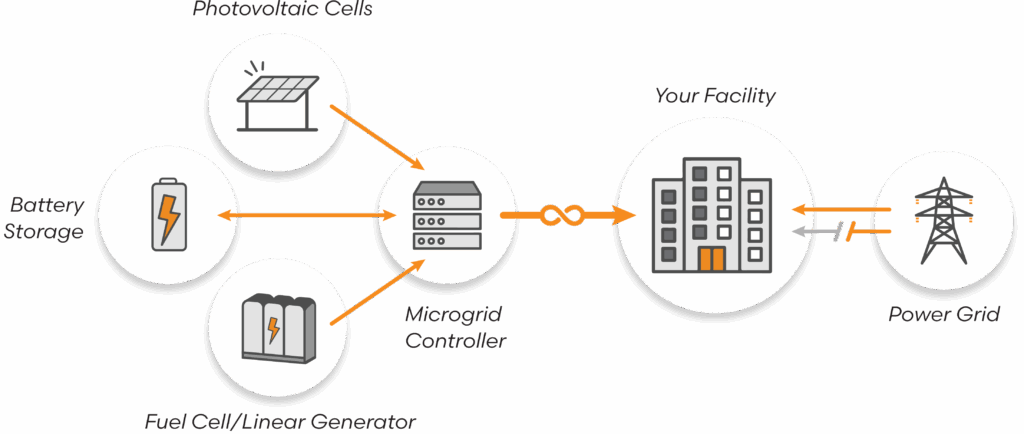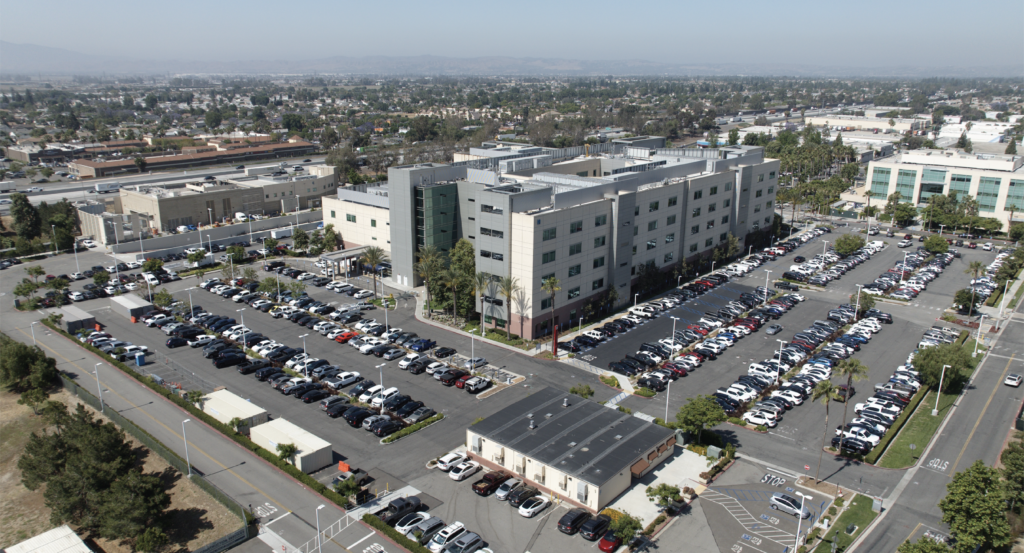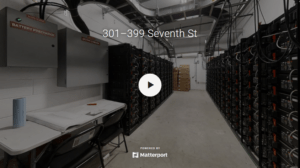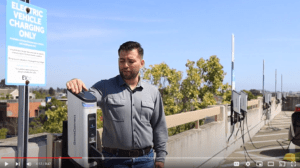Faraday Microgrid Systems
What Is a Microgrid?
A microgrid is more than just solar panels—it’s a complete, intelligent energy system.
At its core, a microgrid integrates:
- Power Generation (e.g., solar, fuel cells)
- Energy Storage (e.g., batteries)
- Control Systems (microgrid controllers and BMS)
It can operate connected to the grid—or “island” off-grid when needed, keeping your operations running without interruption.

Elements of a Faraday Microgrid System

Solar & Renewable Energy Generation – Solar panels and other renewable sources provide clean, sustainable power, reducing dependence on the traditional grid.

Battery Energy Storage – Advanced battery systems store excess energy produced during peak sunlight hours, ensuring power availability during outages or low production periods.

Microgrid Controller & Smart Energy Management – This intelligent system monitors and optimizes energy flow, balancing supply and demand in real time while seamlessly switching between grid and off-grid modes.

Utility Grid Connection & Backup Power – The microgrid can integrate with the main grid or operate independently (“island mode”) to maintain power during grid failures.

Energy Distribution & Critical Load Support – Power is efficiently distributed to essential systems (e.g., medical equipment, security, refrigeration), prioritizing critical infrastructure during emergencies.
Take the Tour
Recent Microgrid Projects

KAISER PERMANENTE | ONTARIO, CA
First Renewable Energy Microgrid to Automatically Island and Support Hospital Emergency Power

In 2019, Faraday Microgrids was awarded an $8.35MM grant from the California Energy Commission (CEC) to build the first renewable energy microgrid capable of sustaining the Critical branch of a hospital’s power system for 10 hours or more. Not only will this be the largest capacity healthcare microgrid built to date in California, but it will also be one of the largest in the Nation.

Kaiser Permanente | Richmond, CA
First Essential Power Healthcare Microgrid in California

Faraday Microgrids was awarded a $4.77MM grant by the California Energy Commission (CEC) in 2015 to build the first renewable energy microgrid for a California hospital. The Kaiser Permanente project in Richmond included the following: analysis of facility energy consumption; collaborative design, engineering, permitting, and interconnection; construction and commissioning; and operation.

SAN BENITO HEALTHCARE FOUNDATION CLINIC MICROGRID | HOLLISTER, CA
Automatically Islandable System to Keep Facility Operations Running when the Grid is Unreliable

Faraday Microgrids was engaged to design, specify, procure, and supply the battery energy storage systems (BESS), balance of systems, and integration for the San Benito Renewable Energy Microgrid. We developed a fully integrated 500 kilowatt-hour battery energy storage system with power conditioning and a third party controller joined to a forty-seven-kilowatt rooftop solar array.











